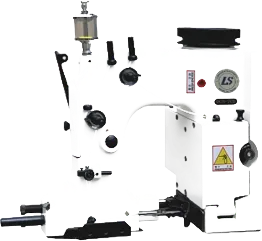leather sewing machine parts
Understanding Leather Sewing Machine Parts A Guide for Enthusiasts and Professionals
Leather crafting has risen in popularity in recent years, attracting both hobbyists and professionals. One essential tool in this craft is the leather sewing machine, which is specifically designed to handle the unique properties of leather. If you are diving into the world of leatherwork, understanding the various parts of a leather sewing machine is crucial to mastering your craft.
1. Needles
One of the most vital components of a leather sewing machine is the needle. Unlike standard sewing machine needles, those used for leather are thicker and have a reinforced design to penetrate the tough material without bending or breaking. Leather needles also come with a wedge-shaped point that allows for smoother stitching while minimizing damage to the leather. When selecting needles, ensure they are compatible with your specific machine, as different machines require different needle types.
2. Presser Foot
The presser foot is another essential part of leather sewing machines. It holds the leather in place while you sew, ensuring even stitches and preventing slipping. There are several types of presser feet designed for leatherwork, including walking feet, which have additional mechanisms to help move the leather smoothly through the machine. Walking feet are particularly useful when working with multiple layers of leather or dealing with thick materials.
3. Feed Dogs
Feed dogs play a crucial role in the movement of the leather through the machine. These small, serrated components grip the material and pull it under the needle while sewing. In leather sewing machines, the feed dogs are often designed to be more robust to handle the density of leather. Some machines may offer adjustable feed dogs to accommodate different types of leather thickness and texture.
4. Motor
The motor of a leather sewing machine is typically more powerful than that of a regular sewing machine. Leather can be dense and tough, meaning that a stronger motor is necessary to drive stitching through multiple layers. Motors might also come in different configurations, such as servo motors, which allow for greater control over speed, making them ideal for intricate leather projects.
leather sewing machine parts

5. Bobbin Case and Bobbin
The bobbin case and bobbin are equally important components of any sewing machine, including those designed for leather. The bobbin holds the lower thread, which interlocks with the upper thread to create stitches. When working with leather, it’s essential to use a bobbin and thread that can withstand the stress of stitching through thick materials. Make sure to choose high-quality polyester or nylon threads, as they offer greater durability and resistance to breaking.
6. Tension Mechanism
Proper thread tension is crucial for achieving quality stitches in leather sewing. The tension mechanism controls the tightness of the thread during sewing. Most leather sewing machines offer both upper and lower tension adjustments, allowing you to adjust the tension to suit the thickness and type of leather you are using. A well-balanced tension will ensure even stitches and prevent puckering.
7. Table and Frame
The table and frame of a leather sewing machine provide stability and support, especially when working with large pieces of leather. Some machines come with an extended table to accommodate larger projects, while others may allow for different frame sizes. A sturdy frame is essential for reducing vibrations and ensuring precision in your sewing.
8. Accessories and Attachments
Many leather sewing machines come with a variety of accessories and attachments that can enhance your sewing experience. These may include edge guides, walking feet, and stitch regulation feet, each designed to improve the versatility and functionality of your machine. Utilizing these accessories can help you achieve a professional finish in your leather projects.
Conclusion
Understanding the various parts of a leather sewing machine is essential for both beginners and experienced leathercrafters. Each component plays a specific role in the sewing process, and knowing how to use and maintain them effectively can make a significant difference in the quality of your leatherwork. Investing time in familiarizing yourself with these parts will not only streamline your crafting process but also elevate the quality of your finished products. Happy sewing!
-
Heavy Duty Leather Sewing Machine: A Must-Have for Professional LeatherworkNewsMay.28,2025
-
Leather Sewing Machine: Essential for High-Quality LeathercraftNewsMay.28,2025
-
Extra Heavy Duty Sewing Machine for Premium Leather ApplicationsNewsMay.28,2025
-
Walking Foot Cylinder Arm Sewing Machine: Precision and Power CombinedNewsMay.28,2025
-
Industrial Cylinder Arm Sewing Machine: Engineered for High-Performance StitchingNewsMay.28,2025
-
Cylinder Bed Sewing Machine: A Powerful Solution for Precision StitchingNewsMay.28,2025
-
Zigzag Sewing MachineNewsMay.12,2025





























